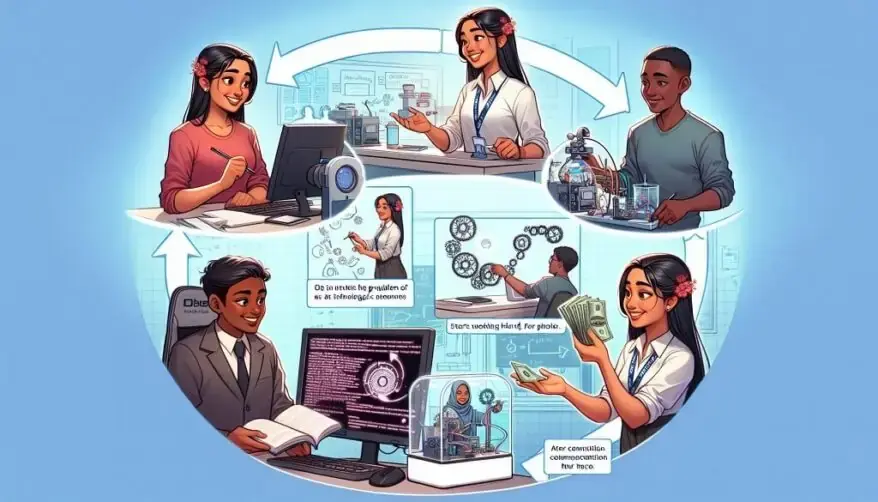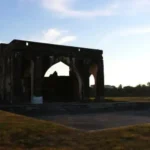Vigyan Ashram: An Educational Laboratory – Part II
Estimated reading time: 7 minutes
Dr. Yogesh Kulkarni is Vigyan Ashram‘s Executive Director. Dr. S. S. Kalbag established Vigyan Ashram in 1983 to study ancient Indian philosophy. It is a modern version of the old Gurukul system. Vigyan Ashram advocates for intelligence development, not inheritance. Learning philosophy is the foundation of Vigyan Ashram. Dr. Yogesh Kulkarni shared the success story of Vigyan Ashram. This was during a conversation with Ms. Harleen Kaur Makhija. She is from ENTECH Magazine.
Since Vigyan Ashram seems to take a very immersive approach to learning, how do you ensure that students are developing both the practical skills and critical thinking abilities needed to thrive?
Whenever you do hands-on learning, we follow a design thinking approach. We’ve been doing this for a long time. This means the student should get involved in productive work. Productive work involves having a customer with a requirement that the student needs to satisfy.
When a student works on a real-life customer need, they need to talk to the customer. The student must understand what the customer needs. Then, they develop a solution based on this requirement. After providing the solution, the student gets paid by the customer. This forms a complete cycle.
To satisfy the customer, the student needs to give various alternatives. This involves skills like critical thinking, empathy, and understanding customer needs. They evaluate the proposed solution based on cost, environmental impact, and material requirements. All these factors are integrated.
When dealing with real-life problems, we use this approach. Recently, this method got the name “design thinking methodology.”
In design thinking, we follow specific steps. First, talk to the customer and understand their problem. Then, look for solutions and do a literature survey. After the survey, show the findings to the customer and take their feedback.
Next, develop a prototype and test it. Then, make improvements and go back to the customer for further feedback. This process repeats until the solution meets the customer’s needs. Work on the prototypes and provide him with a final solution. This is the approach we are following, and yes, critical thinking and creativity are part of this process.
In your experience, how have students responded to this non-conventional style of education? What have been some of the most rewarding aspects of seeing them engage in this way?
The students who come to Vigyan Ashram have a lot of energy. When we help them channel this energy into productive work, we see a positive transformation. They become more focused. Those who were troublemakers at home become productive.
This transformation is satisfying. It happens every year to hundreds of students at Vigyan Ashram.
This education focuses on practical skills. Some people who initially reject these students see their potential. About 90% of our students are school dropouts. Most of them do not complete the 10th or 12th standard. This shows that they can benefit from this education and become productive.
Can you describe your vision for the future of Vigyan ashram and how do you plan to continue evolving the institution’s educational model to meet the changing needs of students and Society
Vigyan Ashram is a laboratory. Laboratories are always small because they are places for experimenting and piloting. But we need to have a bigger impact. We want to spread our learning philosophy to every school and village in the country.
Today, about 90% of school dropouts become farmers, technicians, masons, or repair workers. They work with their hands and start their own businesses. These school dropouts make up 90% of our workforce. They don’t go to engineering colleges or technical institutes. Instead, they learn their skills by doing tasks directly.
This 90% of the workforce is mainstream. If we make their way of learning more effective, we can improve the economy.
We want schools to adopt the “learning by doing” approach. Imagine students coming out of schools with strong practical skills. They can drive our economy forward.
These hands-on learners already contribute a major portion of our GDP. If they become more productive, our nation can progress faster. Our vision is to have modern tools and technical equipment in every school. Students should learn by doing. They should become inventors, innovators, and entrepreneurs.
If entrepreneurship, creativity, and innovation start happening in our villages, our country can become a leading nation.
What are some of the main methods Vigyan Ashram uses to make sure its education is based on a variety of real-world experiences rather than just textbook learning?
The Vigyan Ashram Syllabus divides nature into four subgroups: living, non-living, agriculture, animal husbandry, and home. At Vigyan Ashram, students learn four major areas: engineering, energy and environment, agriculture and animal husbandry, and home health. The philosophy includes four key principles. First, students learn by doing practical work. Second, everyone receives multi-skill training. This means all students, whether boys or girls, must learn every subject. They all must practice agriculture, engineering, energy, and food processing, even if they don’t like it.
Think of it like medical students. Initially, they learn about the entire human body. Later, they specialize in a specific area, like eye or ear care. Similarly, our students get a broad education before specializing. Many problems in society are interdisciplinary, meaning they involve multiple fields. For example, in farming, you grow crops. You also work with electric motors and tractors. You process food, which means preparing or packaging it for sale.
To succeed, you need to understand engineering, electricity, energy, and food processing. Innovations often happen where different disciplines meet. Additionally, Our multi-skill approach prepares students for these interdisciplinary challenges by teaching them various subjects.
What, in your opinion, are the most important skills and mindsets that students gain through Vigyan Ashram and experience that prepare them for the real world?
Students mostly gain confidence. They learn to identify information on the internet. They also learn how to use and apply that information to solve their problems. This is very important. At Vigyan Ashram, students learn how to apply available knowledge. They learn how to search for knowledge worldwide. They know whom to ask for information and how to find it.
For example, if a student watches a YouTube video of someone solving a problem in China, they learn how to use that solution. They use their traditional tools, local materials, and resources. Additionally, Vigyan Ashram helps students believe they can solve their problems. They can succeed in their village. They can achieve almost anything.
How do you envision Vigyan Ashram continuing to evolve and leading the way in redefining what quality education should look like in India?
This is a difficult question because Vigyan Ashram is trying to promote one viewpoint. However, in a large country like India, we can’t say that one approach is the best. Many people need to adopt different philosophies and contribute to redefining them. For example, the problems in the Northeast region differ from those in Kashmir and Himachal Pradesh. The nature of these areas varies. The landscape in the south of India is distinct, and Rajasthan is no exception. Therefore, different parts of the country need new kinds of experiments.
Currently, Vigyan Ashram is collaborating with various organizations across India to refine its philosophy. The rapid advancement of technology is another challenge. For instance, artificial intelligence (AI) is becoming more common. AI will impact many jobs and livelihood opportunities. We need to prepare students to live and work with this new technology.
Vigyan Ashram must keep up with technological changes. It also needs to understand the needs of the entire country, not just Maharashtrian villages or the Pabal region. This program must evolve to face these challenges. Additionally, it is an exciting journey because challenges also present opportunities.
AI is both an opportunity and a problem. We need to create new jobs and help students use AI effectively.
We want them to see AI as an intelligent assistant, not something overwhelming. The goal is to help them use AI as a helpful tool. Yes, there is a lot to do, and it is exciting.
Would you like to share a message with our audience or viewers, your personal experience, or anything related to it?
I won’t send it as a message, but yes, I’d like to invite you. You can visit our website at vigyanashram.com. If possible, we encourage you to visit us at Vigyan Ashram in Pabal. This will allow you to learn from our approaches and potentially collaborate with us. Ultimately, we can progress together, so I’m inviting you to join us on this exciting journey. With this we come to an end thank you sir for your presence and joining us on this episode of Entech online explore your passion that’s all we have for today. Thank you sir.
To stay updated with the latest developments in STEM research, visit ENTECH. This is our digital magazine for science, technology, engineering, and mathematics.
At ENTECH, you’ll find a wealth of information. We offer insights and resources to fuel your curiosity. Our goal is to inspire your passion for new scientific discoveries.





